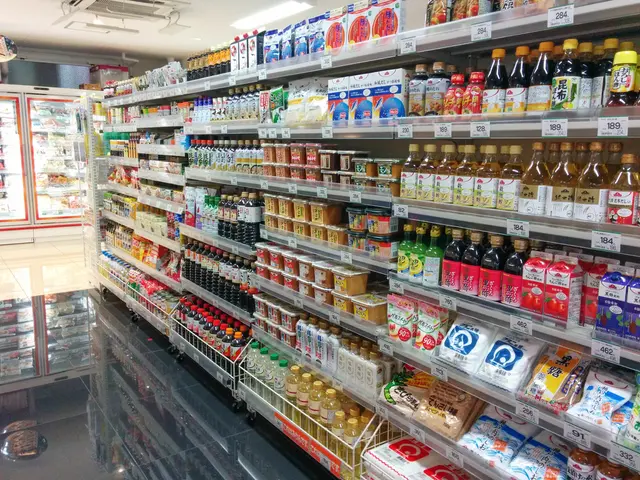Struggling food paradise grappling with shrinking tourist numbers due to dwindling interest among Chinese consumers
Hey there!
Banthat Thong Road, a quiet stretch in Bangkok, has undergone a impressive metamorphosis from a forgotten corner, to a popular culinary hotspot, and now finds itself struggling to regain its former glory. This once-bustling street, sandwiched between Chulalongkorn University and the National Stadium in Pathumwan district, drew in crowds by the tens of thousands, thanks to its thriving food scene.
But, like a setting sun, this lifestyle Mecca began to face a steep decline. The street's rejuvenation was swift but short-lived, with the area now looking eerily quiet. Friday nights, the busiest time of the week, pass by with a distinct lack of activity, and the erstwhile congested pavements now appear deserted. Businesses are suffering, with foot traffic plummeting and revenues tumbling.
The root cause of this downturn lies in the significant drop in foreign tourist arrivals, particularly from China, a crucial market for Banthat Thong vendors. Sitthishan Wutthipornkul, an adviser to the Banthat Thong Business Owners Association, points out that the decline in footfall has led to a staggering 40% drop in daily revenue, further compounded by the sluggish economy.
Regular visitor, Junjira Prajongjud, who works nearby, couldn't help but notice the changes. "There's definitely fewer people now," she remarks, highlighting increased food prices and uncertainty over quality. She also points out practical challenges such as limited parking and walkability, arguing that while the pavements used to be congested, their emptiness today feels even more striking. To attract diners back, she believes prices need to better reflect food quality.
RSP, owner of Nazty BKK and the newly launched dessert shop Lamunn Thailand, echoes these concerns but also offers insights into business strategies. While many establishments have shuttered, Nazty BKK continues to thrive, thanks to a loyal customer base and consistent revenue streams. RSP, who has operated in Banthat Thong for nearly two years, has noticed a shift in customer demographics, from local Thais to mostly Chinese tourists. However, with tourist numbers dwindling, he saw foot traffic fall just as he opened Lamunn. He attributes the area's decline to soaring rent prices, cleanliness issues like rodent infestations and unpleasant odors, poor waste management, and a lack of effective marketing. To survive on this street, he insists, marketing is key.
With the right strategies, a few proprietors in the area remain optimistic about Banthat Thong's future. They see it as a unique culinary destination with the potential to recover, particularly if tourism rebounds, economic conditions improve, and the right efforts are made in terms of strategic management, smart marketing, and public-private cooperation.
However, concerns persist. With rising rents, environmental challenges, and shifting consumer preferences, the road ahead is uncertain. But with determination, creativity, and a touch of resolve, Banthat Thong may once again shine as one of Bangkok's most iconic food destinations.
Fun Fact: Ratchadapisek Road in Bangkok has a vibrant food scene, similar to Banthat Thong, with an eclectic mix of street food stalls and restaurants ranging from traditional Thai eateries to trendy cafes and bars. It's a popular spot for locals and tourists alike, offering a truly authentic Thai culinary experience.
- Despite the decline in foot traffic and revenue, some businesses on Banthat Thong Road are hoping to recovery by implementing strategic management, smart marketing, and public-private cooperation.
- The rise in rent prices, environmental challenges, and shifting consumer preferences make the future of Banthat Thong uncertain, but with determination, creativity, and a touch of resolve, it may once again become one of Bangkok's most iconic food destinations, much like Ratchadapisek Road, which offers an eclectic mix of food and drink establishments.




